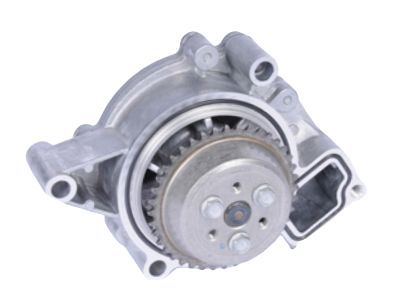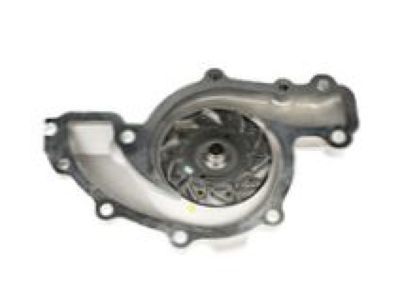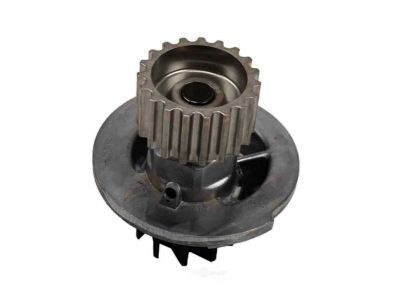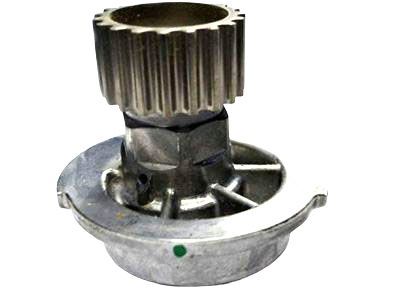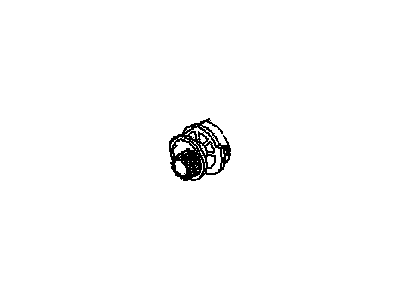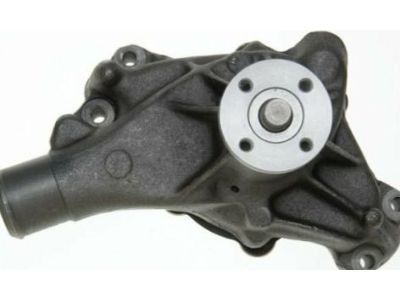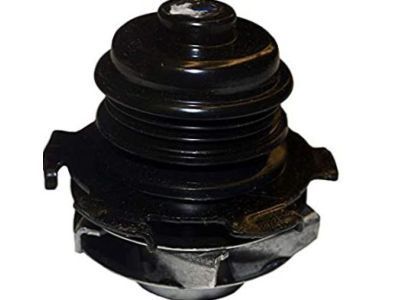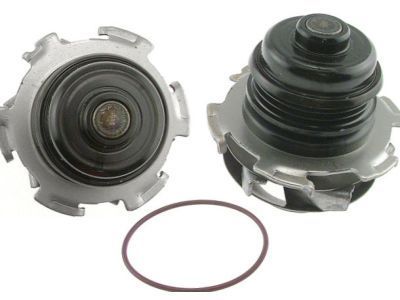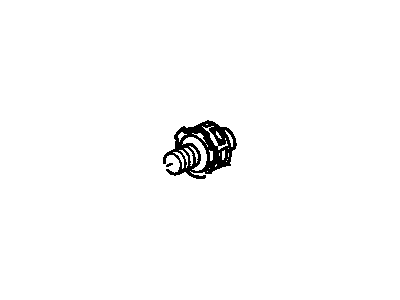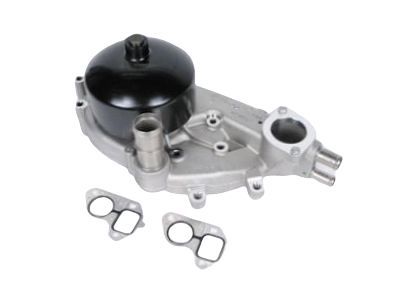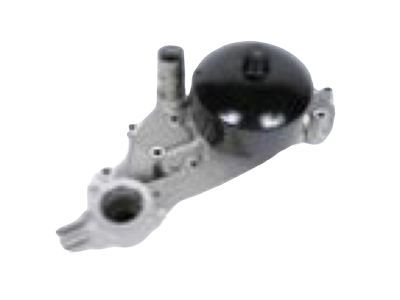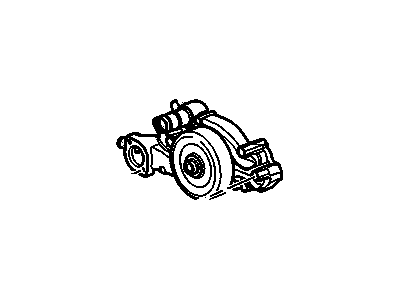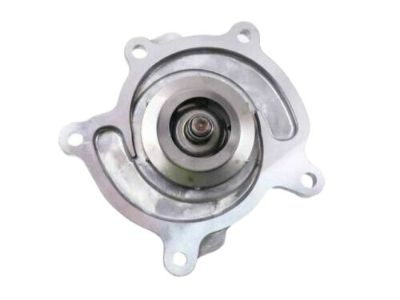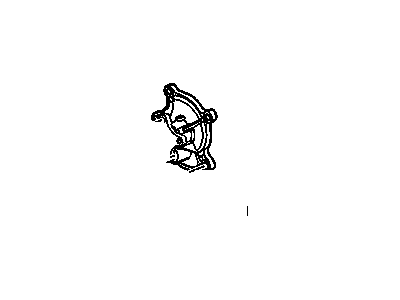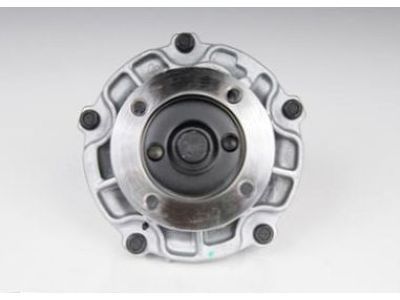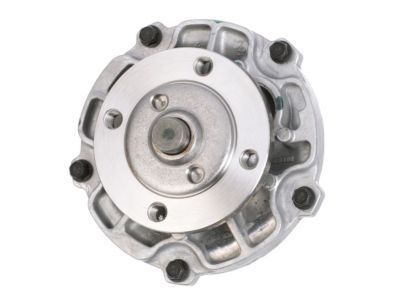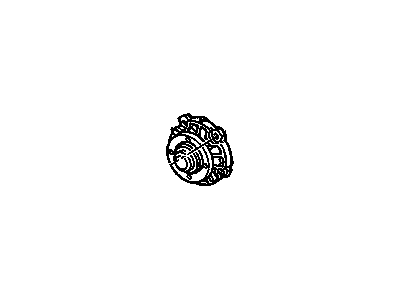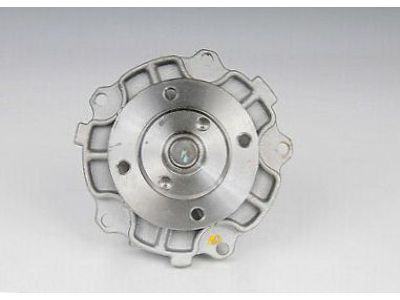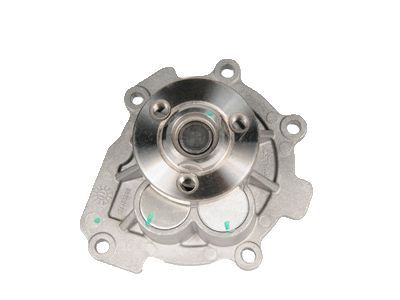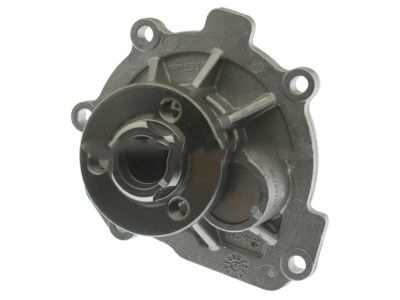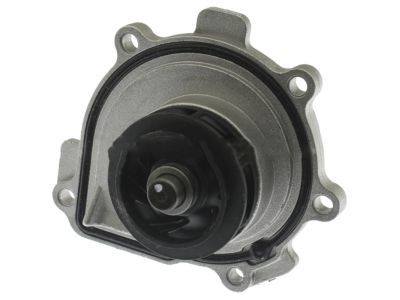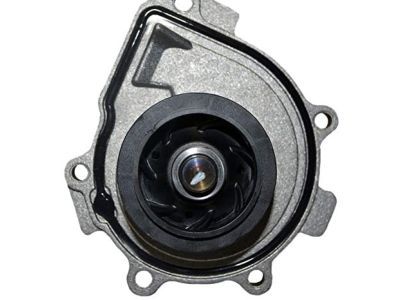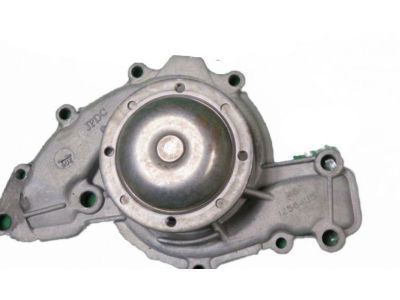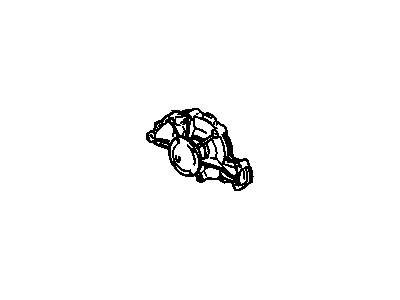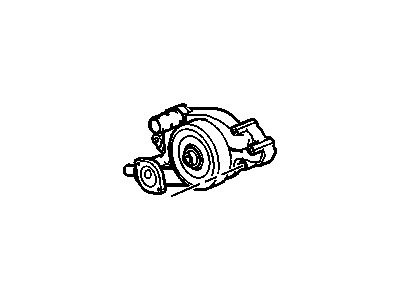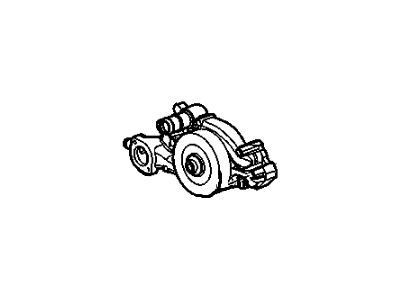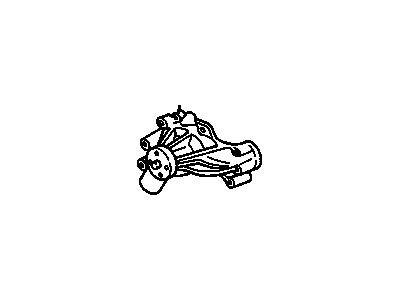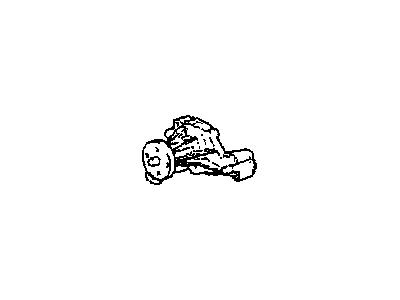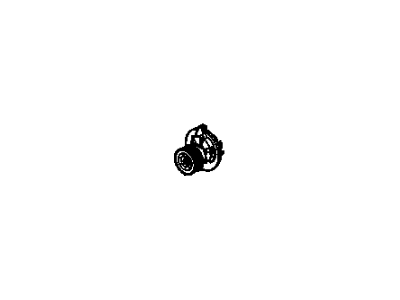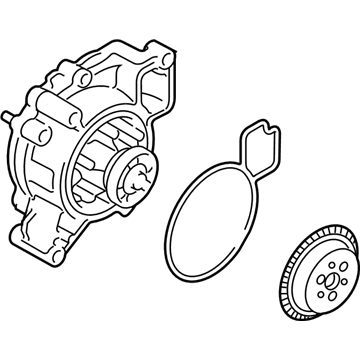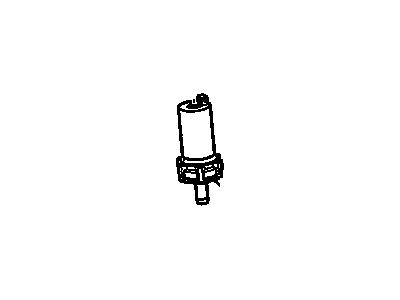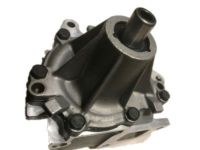
My Garage
My Account
Cart
Genuine Pontiac Water Pump
H2O Pump- Select Vehicle by Model
- Select Vehicle by VIN
Select Vehicle by Model
orMake
Model
Year
Select Vehicle by VIN
For the most accurate results, select vehicle by your VIN (Vehicle Identification Number).
48 Water Pumps found
Pontiac Water Pump Assembly
Part Number: 12630084$202.40 MSRP: $394.54You Save: $192.14 (49%)Ships in 1-3 Business DaysProduct Specifications- Other Name: Pump Assembly, Water ; Pump, Engine Coolant; Water Pump
- Replaces: 12585226, 12591894, 12624936, 19181920, 24467301, 24439798
Pontiac Engine Coolant Pump Kit
Part Number: 19209288$130.01 MSRP: $255.64You Save: $125.63 (50%)Ships in 1-2 Business DaysProduct Specifications- Other Name: Pump Kit,Water; Fan Blade, Water Pump, Water Pump Assembly
- Replaces: 89017813, 89060462, 12482903, 12537829, 89018214
Pontiac Engine Coolant Pump
Part Number: 96930074$90.80 MSRP: $177.00You Save: $86.20 (49%)Ships in 1-2 Business DaysProduct Specifications- Other Name: Pump,Water; Water Pump
- Replaces: 96872702, 96352650
Pontiac Water Pump Kit
Part Number: 19417097$137.69 MSRP: $268.39You Save: $130.70 (49%)Ships in 1-2 Business DaysProduct Specifications- Other Name: Pump Kit,Wat; Water Pump, Water Pump Assembly
- Replaces: 19201601, 88894005, 12532531, 12532529, 12369487
Pontiac Engine Coolant Pump Kit
Part Number: 19210509$85.25 MSRP: $166.18You Save: $80.93 (49%)Ships in 1-2 Business DaysProduct Specifications- Other Name: Pump Kit,Water ; Pump Kit, Engine Coolant; Water Pump, Water Pump Assembly
- Replaces: 12487361, 88894344, 07490007, 12529993, 12365639, 7490007, 89017900, 89017467
- Product Specifications
- Other Name: Pump Kit, Wat
- Replaces: 19256263
Pontiac Pump Kit, Wat
Part Number: 12702111$150.35 MSRP: $281.75You Save: $131.40 (47%)Ships in 1-2 Business DaysProduct Specifications- Other Name: Water Pump, Water Pump Assembly
- Replaces: 89060479, 89017757
Pontiac Water Pump Kit
Part Number: 89017269$131.15 MSRP: $257.90You Save: $126.75 (50%)Ships in 1-2 Business DaysProduct Specifications- Other Name: Pump Kit,Water; Water Pump, Water Pump Assembly
- Product Specifications
- Other Name: Pump Kit,Water; Water Pump
Pontiac Water Pump Assembly
Part Number: 25195119$127.65 MSRP: $240.83You Save: $113.18 (47%)Ships in 1-2 Business DaysProduct Specifications- Other Name: Pump Assembly, Water; Water Pump
- Replaces: 24405895
Pontiac Engine Coolant Pump (W/Gasket & Bolts)
Part Number: 12537495$33.09 MSRP: $179.32You Save: $146.23 (82%)Ships in 1-2 Business DaysProduct Specifications- Other Name: Pump Kit, Water (W/Gasket & Bolts); Water Pump, Water Pump Assembly
- Replaces: 12537892, 12536421
Pontiac Engine Coolant Pump Kit
Part Number: 19180610$247.24 MSRP: $481.98You Save: $234.74 (49%)Ships in 1-2 Business DaysProduct Specifications- Other Name: Pump Kit,Water; Water Pump, Water Pump Assembly
Pontiac Pump Kit, Wat
Part Number: 12710208$301.03 MSRP: $586.81You Save: $285.78 (49%)Ships in 1-2 Business DaysProduct Specifications- Other Name: Water Pump, Water Pump Assembly
- Replaces: 12681186, 19303456, 89017457, 12686762, 89018052, 89017592, 19434778
- Product Specifications
- Other Name: Pump Kit, Wat; Pump Assembly, Water Pump, Water Pump Assembly
- Replaces: 12522033, 12529305, 88894341
- Product Specifications
- Other Name: Pump Kit,Water ; Pump Kit, Engine Coolant; Water Pump, Water Pump Assembly
Pontiac Engine Coolant Pump Kit
Part Number: 93231147$77.14 MSRP: $140.25You Save: $63.11 (45%)Ships in 1-2 Business DaysProduct Specifications- Other Name: Pump Kit,Water; Water Pump, Water Pump Assembly
- Replaces: 93221331
- Product Specifications
- Other Name: Water Pump, Water Pump Assembly
- Replaced by: 12739553
- Replaces: 12645176, 12637479, 12618472, 12657499
Pontiac Water Pump Kit
Part Number: 12482919$73.29 MSRP: $133.27You Save: $59.98 (46%)Ships in 1-3 Business DaysProduct Specifications- Other Name: Pump Kit,Water; Water Pump, Water Pump Assembly
- Replaces: 12537417, 12537135
- Product Specifications
- Other Name: Pump,Water; Water Pump, Water Pump Assembly
- Product Specifications
- Other Name: Pump Asm,Water; Pump, Pump Assembly, Water Pump
| Page 1 of 3 |Next >
1-20 of 48 Results
Pontiac Water Pump
If you're searching for OEM Pontiac Water Pumps, look no further. Our website boasts an extensive inventory of genuine Pontiac Water Pumps, all available at competitive prices online. Every part we offer comes with a manufacturer's warranty. In addition, we provide a straightforward return policy and rapid delivery services, making your shopping experience a breeze.
Pontiac Water Pump Parts Questions & Experts Answers
- Q: What are the ways to check the operation of the water pump while it is still installed on Pontiac Firebird?A:A faulty water pump can cause engine overheating and damage due to lack of coolant circulation. Three checks can be performed on the pump. First, squeeze the upper radiator hose when the engine is warm; a working pump will cause a pressure surge. Second, inspect the pump's "weep" holes for coolant leakage, indicating a seal failure. This may require a flashlight from underneath the vehicle. Lastly, a squealing sound or movement in the water pump pulley may indicate shaft bearing failure. Don't confuse this with drive belt slippage, which also causes squealing. Replace a defective pump immediately.
- Q: How to remove and install a water pump on Pontiac Fiero?A:To get rid of a four-cylinder engine, starting by undoing the cable from the negative battery terminal and removing the coolant. Then, take off the water pump belt as well as lower radiator hose at pump support bracket. After that, remove bolts holding water pump and take it out of engine compartment. When fitting new water pump, clean its gasket surface on pump support bracket and apply RTV sealant around the mounting flange of a new water pump. Mount the water pump onto this housing and tighten down these bolts to specified torque. Attach lower radiator hose, install drivebelt for water pump and tension it accordingly. Finally, fill cooling system with fresh coolant while attaching negative terminal of battery then start engine observing for any leakage coming from coolant system. For V6 engine removals begin by taking off right side louvered cover over engine compartment disconnect negative battery cable. Remove plastic shield over battery and drain cooling system. And then unfasten r nut that secures wiring harness to junction block behind battery; remove EGR solenoid vacuum valve along with bracket as one assembly unit. Loosen right rear wheel lug nuts; lift rear of vehicle and remove right rear wheel. Loosen alternator adjusting bolts (two) and remove drivebelt. Carrying on further when you unscrew all eight M8 x 1.25x50 mm flange screws on top of cylinder head cover, you will see that there were also those two M10 x1 .5x80 mm bored blind holes in your casting near each front corner where cylinder head cover was bolted in place on your cylinder block before; now they are plugged. The reason why it is possible to use TSB's for production vehicles is because they involve problems that areredesigns because they were produced incorrectly. Next the nuts and water pump bolts are removed. Lower vehicle and remove top of water pump. For changing worn water pump, clear mating surface on block and apply RTV to the new water pump mating surface. After that put it in position, raise vehicle and install them. Then tighten them to manufacturer's specifications. Rest of installation is opposite of removal procedure. Finally, start engine with fresh antifreeze mixture from drainage system; allow a normal operating temperature for engine before checking for coolant leaks.
Related Pontiac Parts
Browse by Model
6000 Water Pump Aztek Water Pump Bonneville Water Pump Fiero Water Pump Firebird Water Pump G3 Water Pump G5 Water Pump G6 Water Pump G8 Water Pump GTO Water Pump Grand Am Water Pump Grand Prix Water Pump J2000 Water Pump LeMans Water Pump Montana Water Pump Parisienne Water Pump Phoenix Water Pump Pursuit Water Pump Safari Water Pump Solstice Water Pump Sunbird Water Pump Sunfire Water Pump Sunrunner Water Pump T1000 Water Pump Torrent Water Pump Trans Sport Water Pump Vibe Water Pump
